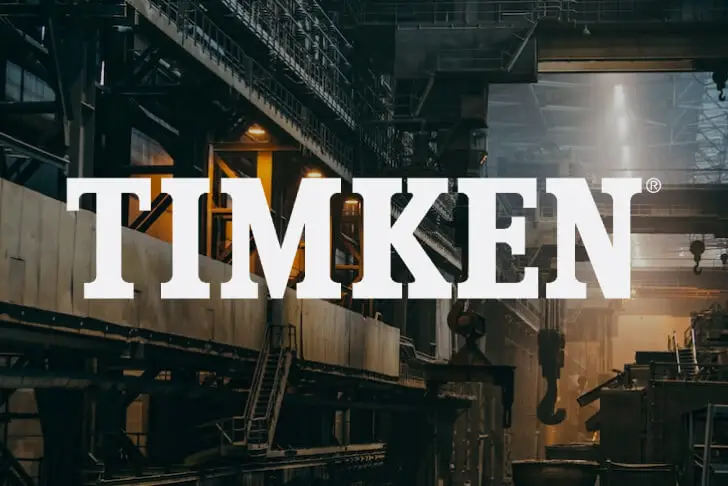Highlights:
- 50% reduction in work-in-process inventory
- Lead times reduced from 13 days to 29 minutes
- On-time delivery and lead-time reliability greater than 95%
Business Objectives:
The Timken Company manufactures Bearings and Steel for primarily four segments: Steel, Automotive, Industrial, and Rail sectors. The organization is over 100 yrs. old and has 28,000 associates worldwide contributing to $3.8 billion (US) in annual sales. The Small Bore Global Operations is a division within the Industrial sector and is responsible for manufacturing products globally for rail products and bearings up to 18 inches in diameter. The division is responsible for Timken’s revenue in excess of $400 million (US).
A prime business objective for Timken is becoming more customer-centric. This corporate-wide initiative has meant working so closely with customers that Timken contributes strategically to their success. Their increased focus on customers and markets is helping identify new growth opportunities. Because customers recognize that the name “Timken” stands for quality and reliability, they have been able to penetrate new markets with more value-added products and services. In an era of supplier-customer partnerships, The Timken Company is a preferred partner.
This customer-centric focus has translated down to the plant operations as well. It has driven the concepts of “Lean” and “Flow” to a new level. It has become a mandate to eliminate waste and through a combination of proper resource development, organization, and careful implementation Timken believes this culture can be applied successfully company-wide.
The Business Challenges:
While corporate initiatives are mandated, local plant challenges existed based on erratic demand. Customer on-time delivery issues were constantly challenged in order to increase the reliability of lead times. In order to address these constraints, excess inventory was used as a buffer to ensure customer delivery performance. This came at a price. Management within the facilities targeted to improve on-time-delivery performance significantly and improve the reliability of lead-time quotes to outside engineers. Other performance targets were to improve operating efficiencies and reduce inventory investment levels in both work-in-process (WIP) and finished goods.
Being in a low-cost global market also has its own set of challenges implicitly imposed on US-based operations. The manufacturing labor costs in the US tend to be higher than in other countries and are extenuated by the intensive capital equipment environment.
The FlowVision Solution:
The Timken environment is characteristically “lean” challenged, due to the erratic demand from customers and what was viewed as a low-volume environment. As a result, the management team felt that they would need to look elsewhere for the necessary skills to help train, analyze, design, and implement a pull-based solution in this environment.
“We felt that we did not have the necessary skill sets to develop and implement a pull system based on our environment and we needed FlowVision’s expertise,” said Scott Pollock, Director of Small Bore Global Operations. Before committing to FlowVision though, Timken underwent the development of a complete business case with return on investment, Net present value analysis, timeline, and commitments to Key Performance Indicators. After initial analysis and design, FlowVision showed Timken that almost 80 percent of the components could be repetitively scheduled based on certain parameters.
Implementation:
The implementation has gone well across one product line and has since been expanded to two additional line offerings. The Timken pragmatic approach to Pull paid off. They utilized well-trained teams taught by FlowVision that attacked each line of product one at a time, with a view to the entire Value Stream Map. The production of Timken products was time-consuming based on the initial process flow within the plant. Benefits in lead time were dramatically realized after Value Stream Mapping was performed and new plant layouts were deployed. Since the plant was now aligned into similar production lines from cellular-based production.
Results:
After implementing Lean, multiple goals have been achieved and most objectives were met. There was a 50 percent drop in work-in-process inventory levels, lead times dropped from 14 days to 29 minutes in some parts of the operation, based on plant and process re-design, and on-time delivery and lead time reliability in excess of 95% routinely. Timken has not yet achieved the desired goals in areas of productivity improvements and finished inventory levels. It was determined there were other factors that needed to be changed to begin major improvements in these areas. These are now underway.
The FlowVision approach, education, and techniques have made our jobs more effective by teaching us the mechanics of how to implement a pull system in our environment. They showed us how to analyze our components and determine where the repetitive processes and similar items existed. This enabled us to develop a Pull based system around these products while utilizing traditional MRP for the remaining twenty percent of our items.
What are the short and long-term plans for Lean manufacturing at Timken? According to Scott Pollock, “We continue to convert product families in manufacturing to pull systems and develop the expertise to attack the entire Value Stream Map.”





